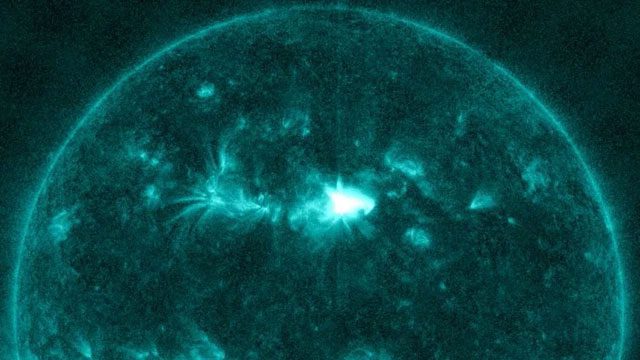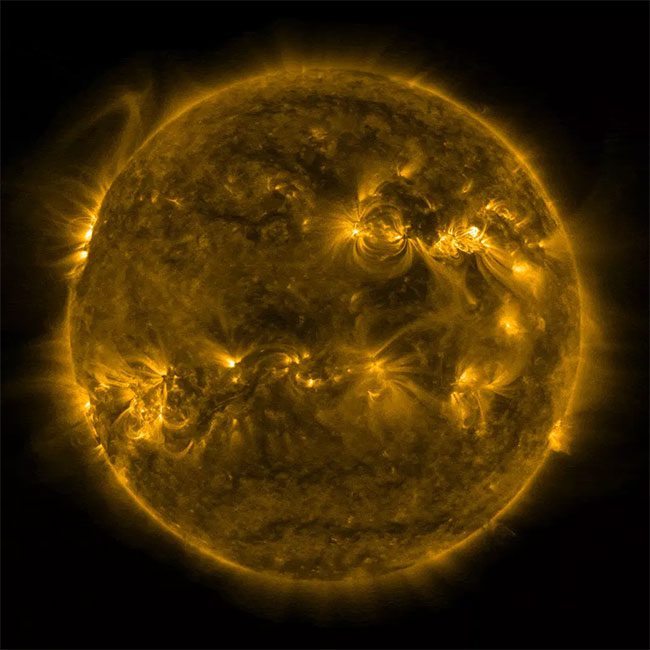Originating from a single sunspot, at least 17 solar flares will occur, with 2 of them heading towards Earth at an enormous speed. As a result of this series of explosive events, the intensity of the Northern Lights will be so strong that residents in the northern United States will also see the glow.
Named AR2975, the sunspot has been continuously emitting streams of charged particles since Monday. This sunspot is formed from regions on the sun’s surface where powerful magnetic fields twist together and then suddenly break apart. The energy released from this phenomenon generates a large amount of radiation, known as “coronal mass ejection – CME”.

One of the 17 flares originating from the AR2975 sunspot.
Two of the flares directed towards Earth have merged, becoming “a cannibal coronal mass ejection,” traveling towards us at a speed of 3,027,599 km/h. Upon colliding with Earth’s magnetosphere, this explosion will cause a G3 geomagnetic storm. Although classified as a strong storm, its impact on electronics is not significant.
Cannibal CMEs occur when a new flare engulfs the radiation released from a previous flare; they combine their strengths, generating a geomagnetic storm that carries various risks.
According to experts, a CME is expected to reach Earth after approximately 15-18 hours of travel. When it arrives, the radiation will compress Earth’s magnetic field, exciting particles in the atmosphere and releasing energy in the form of light. That’s when the auroras light up the night sky.
While Earth’s magnetosphere can safely absorb energy from CMEs, high-level geomagnetic storms still pose a risk of damage. According to the Space Weather Prediction Center, part of the National Oceanic and Atmospheric Administration (NOAA), G3 storms can disrupt satellite navigation signals and affect low-frequency radio signals.

A CME will reach Earth after approximately 15-18 hours of travel.
In February, a powerful storm knocked 40 Starlink satellites out of orbit. Scientists have repeatedly warned that strong solar storms can potentially disrupt global internet networks.
Scientists believe that such phenomena have occurred in the past. Contemporary history refers to this as the Carrington Event of 1859, when a solar storm, carrying energy equivalent to 10 billion one-megaton atomic bombs, collided with Earth. The massive energy surge incinerated the global telegraph system and produced auroras bright enough to be seen near the equator.
If such an event were to occur in modern times, the financial damage would be difficult to articulate. However, in numbers, widespread power outages could result in losses of hundreds of billions of USD, plunging the global economy into a deep sleep with no foreseeable awakening.


















































